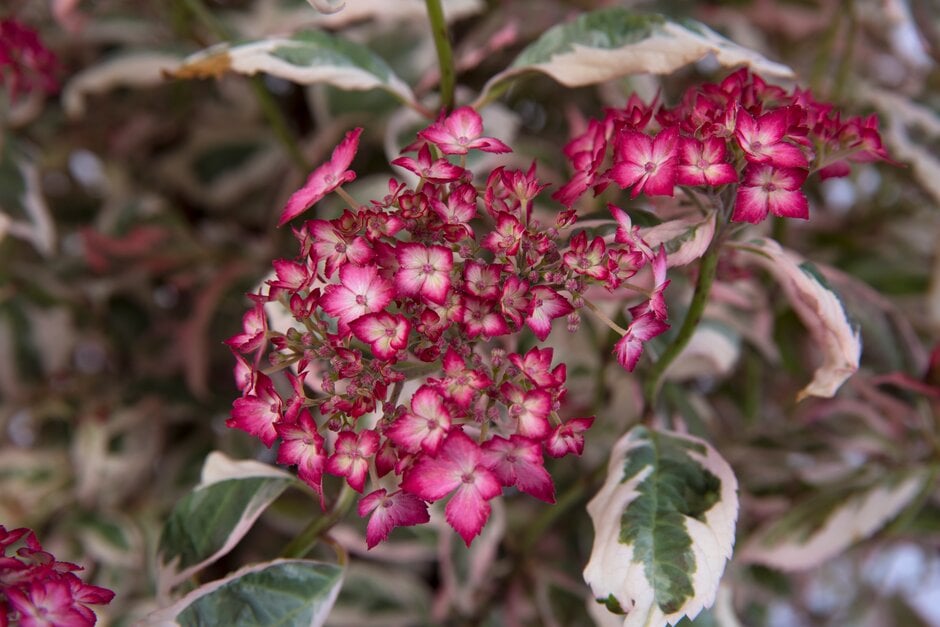New plants: Hydrangea After Midnight
The first hydrangea to combine dramatic purple-black foliage – which holds its colour all season – with shapeshifting blooms in a rich, deep red
There’s a constant flow of new hydrangea varieties arriving in garden centres and mail order nurseries. Last year one of these, Hydrangea Euphoria Pink, scooped second place in the RHS Plant of the Year 2023 awards. However, the combination of flowers and foliage presented by Hydrangea macrophylla After Midnight (‘Jong 02’) is unique.
What’s so special about Hydrangea After Midnight?
Hydrangeas are essential summer-flowering,
Mophead hydrangeas develop large, rounded flowerheads made up of a mass of sterile, four-petaled florets up to about 2.5cm (1in) across, in red, pink, blue, white or a combination of colours; all turning towards beige in autumn.
Lacecap hydrangeas have a ring of large sterile florets around the edge of the flowerheads, with a mass of small fertile florets in the centre.
In both of these forms, the flowers are set against bold, glossy, dark green foliage.
Mophead hydrangea After Midnight is different. Firstly, the flowerheads start off in lacecap form, but become more like a mophead as they mature.
Secondly, the sterile florets mature through pink to an unusually deep, rich red. In addition, the foliage of is a deep purple, almost black in colour, throughout the season.
Other dark-leaved hydrangeas are mainly lacecap types and, if the foliage is dark in spring and perhaps in autumn, it greens up during the summer. Uniquely, the foliage of After Midnight remains almost black all summer. The combination of the deep red flowers and the sultry dark foliage really is special.
Where did Hydrangea After Midnight come from?
Hydrangea After Midnight was developed in The Netherlands by hydrangea specialists Peter Kolster of Kolster BV and Kees Eveleens of Horteve Breeding. Their aim was to develop new hydrangeas that combine good flowers with good foliage colour.
To create this striking purple-leafed hydrangea, they crossed an earlier lacecap variety, ‘Dark Angel’, which has green-veined, coppery to bronzed foliage, with an unnamed, dark-leaved mophead variety in 2015. Two years later, they picked out a seedling to which the reference ‘Jong 02’ was assigned. Then, as the new youngster proved its worth, it was given the selling name of After Midnight.
After Midnight has foliage that’s almost black in colour, right through the season, and the sterile florets in the flowerhead mature to rich, deep red. The most similar variety is ‘Merveille Sanguine’, introduced in 1939, which has greenish purple foliage but with no black tones.
Plant After Midnight in a sunny or semi-shaded position in any rich and fertile soil that does not dry out. In acid soils, the flowers will tend to be purplish-blue in colour, while limey soils will tend to produce red to dark pink flowers. After Midnight flowers from July onwards, on growth made the previous year.
The old flowerheads are attractive through the winter, so leave them in place until new shoots start to grow in spring. At this point cut back about a quarter of the previous season's flowering stems to the base and prune back the remaining stems to the first pair of buds.
After Midnight will also thrive in a container, a soil-based peat-free
Thompson-Morgan-hero-mob-400x320.jpg?width=480)

Plantipp-940x627.jpg?width=940&height=627&ext=.jpg)